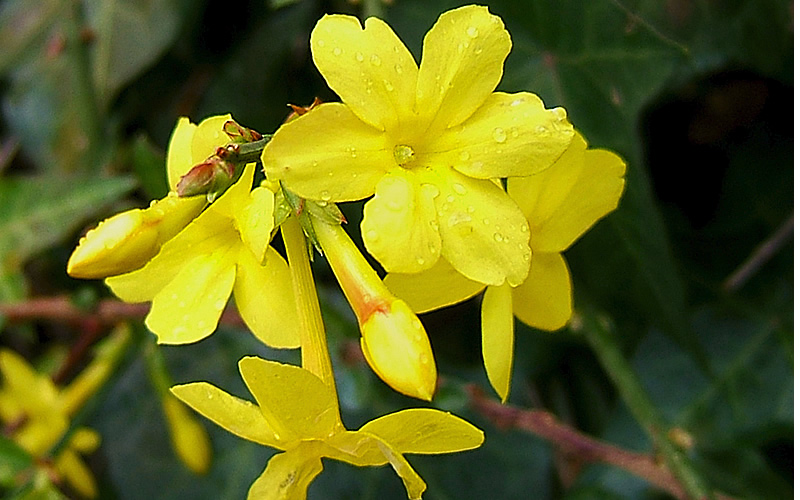
S.C. Encyclopedia | The yellow, or Carolina, jessamine (Gelsemium sempervirens) was chosen as state flower by the General Assembly in 1924. In 1923 the legislature appointed a commission to select a floral emblem. Senator Thomas B. Butler and Representatives George B. Ellison and Thomas Savage Heyward recommended the yellow jessamine to the Senate and House on Feb. 1, 1924, and it was promptly adopted by both chambers.
The legislators observed that the jessamine was “the unanimous selection of the great majority of the ladies of the State who expressed a preference.” Four specific reasons were given for the designation: “(1) It is indigenous to every nook and corner of the State. (2) It is the first premonitor of coming spring. (3) Its fragrance greets us first in the woodland and its delicate flower suggests the pureness of gold. (4) Its perpetual return out of the dead winter suggests the lesson of constancy in, loyalty to, and patriotism in the service of the State.”
The yellow jessamine is a twining woody vine with pointed, evergreen leaves. It climbs over bushes, fences, and even tree limbs. Five-petaled, star-shaped yellow flowers bloom from February or March through early May, and the capsule-like fruit matures from September to November. It is common in the South Carolina Piedmont and Sandhills and in the coastal plain from Virginia to Florida, as well as west to Texas and Arkansas. All parts of the plant are poisonous, and even touching it can cause dermatitis. The drug gelsemium was formerly made from the plant and dispensed for the treatment of malaria, but overdoses could be fatal and it is no longer used. Sprigs of jessamine are etched on the steel blade of the Sword of State used by the South Carolina Senate.
– Excerpted from the entry by David C.R. Heisser. To read more about this or 2,000 other entries about South Carolina, check out The South Carolina Encyclopedia by USC Press. (Information used by permission.)



 We Can Do Better, South Carolina!
We Can Do Better, South Carolina!
























